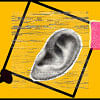Lost Games Of Dhaka City

They say change is the only constant in life, and if you have grown up in Dhaka, you have lived long enough to witness change on an unprecedented level. If you compare photos of the capital of Bangladesh taken in the 80s with what Dhaka is today, you'll get the message loud and clear … and if you include the 60s and 70s in the timeframe, you might be in for one hell of a shock!
Back in those days, Dhaka was not as densely populated as it is today, and it was not devoid of open space and fields for young boys and girls to play. Back then, growing up in Dhaka was really fun, considering all the outdoor games you played with your friends, classmates, cousins and other children in the neigbourhood.
Games like “Shat-chara,” “Tilo-Express,” “Gulli Danda,” “Rumal Chor” and “Kumir Danga” kept us engaged, entertained us and taught us some of the most invaluable lessons in socialising firsthand. It is indeed sad but true that those games we once loved to play have met their end as we grew up.

SHAT CHARA
“This is what Shat Chara gave me,” said Ashfaq Chowdhury, as he pointed at the scar on the side of his forehead, “and a sound beating from my father afterwards…” huffed and puffed the man on the wrong side of his fifties, as he trudged away on the treadmill, hoping to burn those extra plates of “Kacchi Biriyani” he couldn't resist the previous night at the banquet.
“My friends, cousins and all the boys in the neighbourhood just loved to play Shat Chara … and more the people, the merrier it became at our colony ground in Azimpur,” he recalled rather fondly, as he looked at his reflection on the mirror after the brief ordeal on the treadmill.
“One day, while playing, I was building the tower with seven pieces of clay chips, just managed to put the fifth piece on top, and then in an instant, a piece flew and struck me from nowhere. Some so and so (who later turned out to be his friend Swapan) threw the ball with all his might from really close, and the clay piece struck the side of my forehead like a bullet.”
Ashfaq said slowly in his deep, heavy voice: “I still didn't feel anything really, but as blood came gushing out, I knew I was in deep trouble.”
He needed several stitches to stop bleeding and then got a good beating at home, when his father found out some of his previous mischief on that unfortunate day.
In the game of Shat Chara, players divide themselves into two teams. Both teams stand at a distance of several yards from each other with seven clay pieces/flat stones placed midway on a spot and piled up in the shape of a tower. A member of the first team takes a ball and tries to strike the stones to topple the tower. The player is usually given three chances to hit the pile. If the member of the first team fails to do so, the second team gets the ball to try.

If the first team member manages to hit the pile but any member of the second team catches the ball before it bounces back to the ground, the ball will again be passed on to the second team for continuing the game. If the members of the second team fail to catch the ball, their aim is to stop the members of the first team from assembling the stones to form a “tower” again.
To prevent the first team members from doing so, the members of the second team try to hit the members of the other team with the ball. The members of the first team try to avoid contact with the ball. If the first team manages to re-pile the stones or clay pieces without any of its members being hit by the ball, they again retrieve the ball to strike the pile, or else the ball is given to the second team to take their chance.

GULLI DANDA
It is played with a danda (stick) usually about two feet in length and a smaller piece of stick called gulli, which is about four inches. A groove is made in the ground in which the gulli is kept at an angle. Often a circle is made on the mud around where the gulli is kept.
The gulli is hit with a stick and while it is in the air. If the gulli is caught by the opponents in the air, then the player is out, otherwise the player and his team gets the points, equal to the measurement of the distance traversed by the gulli as measured with the danda.
While the gulli is in the air, the player can also attempt to toss it a few times with the danda before finally hitting it away.
“I was damn good at this game, and enjoyed playing it with my brothers and cousins when we used to live in a joint-family at Armanitola. My elder brother Siam was a fine player, and we had our rivalry to spice things up as well,” said Salim Ahmed, aged about 50 years.
“Ahh…those were the days,” Salim recalled as he stretched his legs and picked his goatee before he threw a pot-shot at his brother. “I lied to get myself out of trouble, you were at the wrong place at the wrong time.”

TILO EXPRESS
“I will never forget that fateful evening during Ramadan when I was playing Tilo Express with my friends and boys in the colony,” said Shahed Khan, as he tried frantically to kick-start his motorbike.
“I was hiding behind a jeep, and knew Reaz (who was the looking for him) could never see me in the dark. When I heard his voice from near, I wanted to go to another spot and began to run,” Shahed said in a tired voice, still unsuccessful in getting his bike started.
“Since I knew the neighbourhood at Wari, Old Dhaka like the back of my hand, I ran quickly through an alley, failed to notice the open manhole in all my excitement and broke my right leg then and there…”
In Tilo Express, a player is chosen to be the one (chor) to find everybody in the game. He or she starts counting from 1 to 50 giving others the time to hide. Once the counting is finished, the player starts hunting for those who are in hiding. While searching, he/she must be very careful to make sure that no one can touch him/her and say Tilo.
Whenever he/she finds someone, he/she will have to say "(name of the person), express". In this way, the Tilo has to find everyone in hiding, but at the same time remain alert so that no one from the hiding can come out and touch him/her.
After the player is successful in locating everyone, it will be the turn of the person, who was found out first, to be the chor and find others.

RUMAL CHOR
Rumal chor can be played with multiple players. One of them is decided to be the chor (thief). The rest of the group sits facing one another in a circle with their eyes closed or open for some time. Within this period the chor runs behind his friends and suddenly leaves his rumal (handkerchief) behind one of the sitting players. On some signal from the chor everybody starts looking for the rumal behind them.
The one who finds it runs after the chor to catch him. The chor runs around in circle and tries to save himself from being caught and take the vacant seat of the person chasing him or her (with the rumal). If the chor is caught by the person with the rumal, he again becomes the chor; in this way the game continues.
“This game becomes more enjoyable as the number of players increase,” explained Nazmul Haque. As he fiddled away at the screen of his smartphone he recalled his childhood when he used to play Rumal Chor with his elder sisters, and girls in their neighbourhood.
“I didn't have any brother, but was blessed with multiple sisters,” Nazmul said, as he failed to improve his best score in the video game on his phone.
“The game was fun, but I had to do a hell lot of running since I was tricked into being the chor by my elder sisters, and they have a laugh about my predicament even to this day…” he added, sharing some of his awkward childhood memories in good sport.
KUMIR DANGA
This is also an outdoor game once hugely popular among children. It can be played in a park or where part of the ground is higher. The terms used in the game are danga (land) and kumir (crocodile), the person who has to catch the other players.
The game requires four or more participants, out of whom one is the kumir. All the participants stay on the danga (a designated area) and the kumir remains in the “water” (the rest of the area).
Whereas the members of danga try to roam in the “water”, the kumir would not let the other players cross or stand in his or her area (water). If any of them is caught by the kumir in “water”, it is their turn to now become “kumir”.
The game is simple and enjoyable if the participants do not stick to their places for long and keep moving frequently from “land” to “water” and vice versa.
“I used to help my mates by diverting the kumir's attention…I entered her area and teased her while we crossed over into each other's area,” Farhana Ahmed remembered fondly the game she used to play with her sisters, cousins and nieces at her Eskaton home.
She said it was a blessing to grow up playing outdoor sports and live in places with ample playing grounds, considering what the children experience in Dhaka nowadays.
“My two little daughters have no idea about kumir danga, they have grown up in Dhaka city where no one played this exciting game with them.”
Farhana spoke about the gulf of difference in her and her children's childhood.
“Boys and girls have hardly anywhere to go in Dhaka city if they want to play, mainly due to lack of space and security. They are forced to stay indoors, within the confines of the apartment ground floor when they have to play,” she added.
[All information about the games has been taken from Maa Mati Manush website.
Photo: Darshan Chakma & Maa Mati Manush.]

 For all latest news, follow The Daily Star's Google News channel.
For all latest news, follow The Daily Star's Google News channel. 








Comments